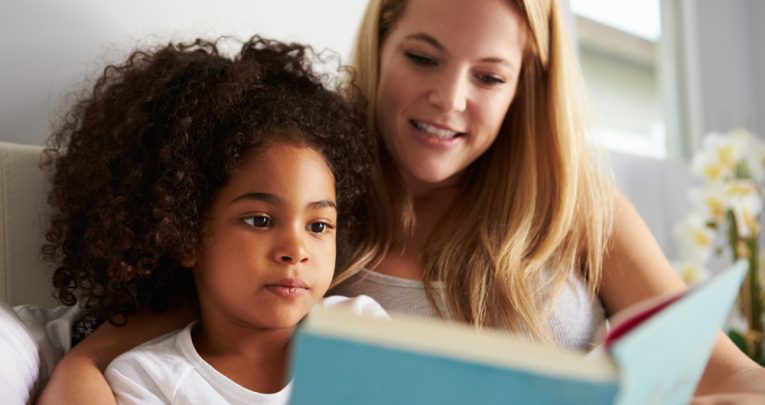Top 10 books for primary children going through difficult situations

From bereavement to domestic violence, some subjects can be hard to talk about. Here's Tracey Lawrence's pick of 10 books that can open up conversations and help restore children's confidence…

Stories can be a powerful tool. They can inspire, motivate, challenge perceptions and also provide children with some much-needed support.
I regularly use stories as a support tool for children going through difficult situations. Through reading the right kind of book with a child, you can unlock a number of different avenues for children trying to navigate their way through what can be a maze of complex emotions.
When doing this, you need to take your time, be prepared for questions and be comfortable in silence – but most of all, you need be there for the child.
There are any number of stories out there that can help with all sorts of different issues – but here (in no particular order) are 10 that can be used to support children with difficult life events…
1. The Day Poppa Turned Into A Star
Tracey Lawrence
Written from true events, this story features a little boy called Aidan who goes from seeing his Poppa regularly – and even classing his as his best friend – to having to face the stark reality of watching his Poppa get poorly, to finally losing him.
Not only does it take you through these difficult times, it also shows Aidan after losing his Poppa and finding some enjoyment from the activities that he’d used to do with his Poppa. Supporting children going through bereavement can be extremely tricky, but this book can be used as tool to break the silence.
2. The Colour Monster
Anna Llenas
Aimed at younger children, this story seeks to talk them through a variety of different emotions. Beautifully illustrated, it sees Llenas encouraging children to discuss their emotions by linking them a particular colour. As a teacher, you can use similar language when supporting a child exhibiting such emotions to help cement those links further.
3. Badger’s Parting Gifts
Susan Varley
A poignant story that deals with the issue of bereavement. Badger is old and aware that he will soon die, so he tries to prepare his friends for this sad event. Badger does indeed later pass away during the story, leaving his friends to initially struggle with their bereavement.
In time, however, Badger’s friends are able to find comfort in the memories they have of the fun times that they once shared with him.
4. How Are You Feeling Today Baby Bear? – Exploring Big Feelings After Living in a Stormy Home
Jane Evans
A book targeted at younger children in the position of having experienced domestic violence at home. The author takes us on a journey where children get to see Baby Bear’s feelings change from sunny and warm, to grey and rainy following a stormy evening at home. The book also comes with guidance notes and supporting activities for the adult – potentially a social worker, counsellor, or member of support staff – who is reading the story.
5. Billy Bramble and the Great Big Cook Off
Sally Donovan
Targeted primarily at KS2 children, this book aims to get children thinking about themselves in relation to their behaviour and seeing the two as separate.
Our central character is Billy, who is described as ‘less than perfect’. He has an invisible angry dog, Gobber, who barks in his ears, gives him ‘brain mash’ and breaks things. The story follows Billy’s determined efforts to win ‘The Great Big Cook Off’ being held at his school and hopefully defeat Gobber in the process…
6. Not Today, Celeste!
Lisa Stevens
This story, pitched at children aged 3 and up, is about a dog called Celeste who outwardly appears to be the happiest dog in the world – yet she has started to notice something different about her human.
Reinforcing the message that children can be affected by depression without the adults around them realising, Not Today, Celeste! comes with a guide for parents and professionals on how to support children who may be experiencing various forms of depression within their household.
7. The Boy Who Built a Wall Around Himself
Ali Redford
A colour picture book that explore issues of attachment, while helping children to explore their feelings and communicate with adults who may be working with them.
In the story, the main protagonist, known only as ‘Boy’, builds a wall to keep himself safe. At first, the wall allows him to feel more protected and stronger – but then one day, ‘Someone Kind’ comes along. At first, we see her she’s bouncing a ball. Then she moves on to singing, until eventually she begins painting the other side of Boy’s wall.
Through following the interactions of ‘Boy’ and ‘Someone Kind’, the children reading along can begin to explore life on the other side of their own walls…
8. My Big Shouting Day
Rebecca Patterson
A perfect book with which to explore appropriate uses of language and behavioural boundaries.
Bella encounters many events in her life that make her feel angry and tired. By following her trials and travails, children can start to identify with her feelings (though they might feel somewhat exhausted by the end) and get a sense of the good that restorative conversations can have.
9. The Huge Bag of Worries
Virginia Ironside
We are supporting more and more children with anxieties – though in Jenny’s case, they’re physically right there with her, in a big blue bag she must carry everywhere.
As the story progresses, Jenny comes to the realisation that she needs to work through her worries and rid herself of them – providing a lesson that can be used in turn to help children work through and hopefully let go of the anxieties that affect them.
10. How are you feeling today?
Molly Potter
Less a story book and more a ‘dip-in’ advice book, How are you feeling today? contains a number of straightforward and entertaining strategies that children can use to deal with particular feelings, along with a series of explanatory notes for parents at the back
Rather than being solely a story book, this book is full of practical advice when dealing with emotions presented. You can practise these strategies as you read them during your sessions.
There are a plethora of stories that are available dealing with difficult topics. Next time you come across these topics, try these. Talk to colleagues, network with others and this short list will soon turn into an incredibly useful resource for you in the future.
Tracey Lawrence is an assistant head and Y2 teacher; she blogs at behaviourteach.blogspot.co.uk and tweets as @behaviourteach










